Trading Places Is a New Year’s Movie With an Urbanist and Modern Message
The 1980s comedy is not just a New Year's movie but one with strong tones of urbanism and a surprisingly modern message that is more relevant than ever.
Every holiday season, there is an online debate about whether Die Hard is a Christmas movie. I’m not here to settle that debate (note: it is). I’m here to make the case that Trading Places is a New Year's movie.
There are so many Christmas, but few for the other holidays in the season, and the film often gets tossed into the massive Christmas movie bin. So here’s the case for why Trading Places is a New Year’s movie, one with an urbanist focus and modern relevance.
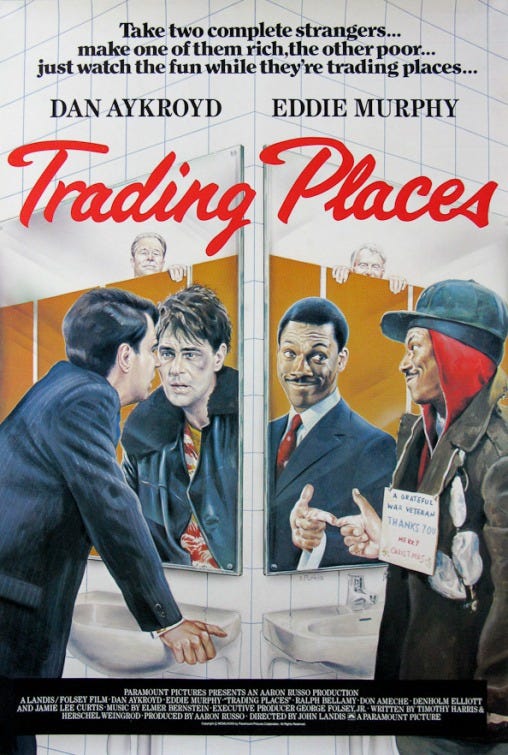
Recapping Trading Place
For those unfamiliar with the film (perhaps stop reading this and go watch it right now), it stars Dan Aykroyd as Louis Winthorpe III and Eddie Murphy as Billy Ray Valentine in a kind of 1980s remix of Mark Twain’s The Prince and The Pauper and The Million Pound Bank Note. The stars are deceived into swapping social status by the evil Duke brothers (Don Ameche and Ralph Bellamy).
The timeline of the movie runs through the holiday season, ending just past the New Year. Valentine, as the pauper, initially gets arrested right around Thanksgiving, as indicated by the jail scene line, “It ain't cool being no jive turkey so close to Thanksgiving.”
Some have even suggested that the film is a Thanksgiving movie—I don’t buy that.
Midway through the film, the spiraling prince meets his lowest point at his former employer’s Christmas party. Aykroyd delivers an all-time performance as the zonked-out Winthorpe, dressed as Santa and stealing an entire salmon from the hors d'oeuvres tray.
The two then join forces after Christmas to take down the Dukes, aided by Jamie Lee Curtis as Ophelia, the love interest and prostitute, along with Denholm Elliott as the butler, Coleman.
This stage of the film is where the New Year sentiment really starts to shine…
New Year’s Eve Eve Train
The third act of the film features the New Year’s Eve train party, which has been seared into my brain. Ever since I first watched the movie as a kid, I have wanted to do a New Year’s Eve party on a train. Alas, later in life, I have discovered that the train party was mostly a fabrication.
Even my post on old Twitter comes up on the first page of Google search results (just after all the ads) when searching ‘new year train party trading places’.
There are a few party trains around the world that offer New Year’s service. While these are certainly on my bucket list, they all look more subdued and buttoned-up than the raucous Amtrak costume party in the 1980s.
I also must admit that I have always misremembered the train party being on New Year’s Eve, but rather it is a party for New Year’s Eve, meaning the film is depicting a New Year’s Eve Eve party.
In the movie, our protagonists were hitching a ride on this party train from DC where the Duke’s fixer Clarence Beeks (Paul Gleason perfectly playing an 80s a-hole) was returning with stolen crop reports.
After some classic 1980s hijinx, the team does indeed get the crop report for the upcoming year. They feed false info to the Dukes, while pooling their own money together to get rich off the downfall of the arrogant brother.
Winthorpe and Valentine then train up to New York City to make their trades in person. Executed to perfection, the duo wishes Happy New Year to the Dukes when they send them to the ‘poor house’ on the trading floor.
The Urbanism of Trading Places
Aykroyd and Murphy may be the leading men, but they co-star in Trading Places with the city of Philadelphia. The movie opens with a love letter montage to the City of Brotherly Love. No movie is beating Rocky in terms of what it means to the city, but Trading Places does 1980s Philly justice
Throughout the film, Philly’s old-world charm mixes with the grime of deindustrialization. Independence Square, classical portraits, statues of the country’s founders, and the affluence of old money adorn the screen. So too does homelessness, boarded-up buildings, dive bars, and working-class realities. Even the Rocky statue makes a cameo.
The Philadelphia of Trading Places is beautiful, cold, historic, and grungy.
Since I often post about college adaptive reuse, I was delighted to find the Philadelphia Mint, used as exterior shots in the film, has now become the Community College of Philadelphia.
If Philly is leading the billing, New York City could be nominated for Best Supporting. While a short cameo, Louis hypes up New York as the true jungle, the big leagues of the trader world, with the Old World Trade Centers looming over them.
The connection between Philadelphia and New York City is strong—tied together physically by the train, but proverbially via the markets. The depiction makes the Acela Corridor feel like a real American megalopolis.
Modern Sensibilities
A movie from over 40 years ago is going to show its age. The Black Face scene isn’t great, as well as the various slurs throughout. But Trading Places still manages to broadly grapple with race and class divides more skillfully than modern works.
The film was initially titled Black and White, and Murphy’s character, in particular, offers poignant and sometimes subtle insights into race and class relations in 1980s America.
Murphy’s character starts off homeless, moving his way up into high society. Throughout the film, the Billy Ray character Code Switches depending on who he is talking to, sometimes fumbling mid-sentence. “You got a lot of soul!” he yells derisively after the Black doorman after booting him away.
The film illustrates the intersections of race and class, with the wealthy treating the multiracial help and the lower classes as props. The film’s sentiment is that it isn’t just about race, but race is a part of it.
Even Louis gets made fun of for his transatlantic accent and pompous speaking style when mingling with regular people of Philly. The casual way Ophelia pronounces Lewy rather than Louis illustrates the point.
Trading Places gives a peak inside the old-money world of elite WASP culture that dominated the Northeast since the country’s founding. While that subculture has sort of faded from the popular American discourse in recent years, parallel sensibilities remain today.
The acappella-singing frat bro colleagues with their popped collars, egos, and sweater vests at the squash club exist today in the same kinds of clubs, only now wearing NorthFace vests. They even went to the same elite schools that dominate today—the Exeter to Harvard pipeline mentioned in the film is as strong as ever.
If it were made today, parts of the internet might be angry that the evil villains were old white racist guys. The Dukes even had photos of Reagan and Nixon on their desk!
While the affluent Dukes are chauffered from their mansion in the suburbs, regular people are riding the SEPTA bus, sometimes getting freaked out by a deranged dirty Santa. A story of public transit that remains familiar today.
In general, the film highlights some of the same salience around wealth inequalities that are currently rapidly boiling. While I don’t really understand exactly the scheme Louis and Billy Ray pulled to ruin the Dukes, it does have echoes of the celebrated Game Stop short squeeze incident.
Life, Death, Rebirth: The New Year
I have made the case that the plot of Trading Places is a New Year’s movie, but so too is its message. The plot follows the long tradition of the New Year: the beginning of the year brings life, age progresses with the year until death, and on New Year’s Day there is rebirth.
While this may sound morbid, this kind of iconography used to be a fairly common depiction of New Year’s celebrations. A decaying skeleton grim reaper-like figure making way for a newborn baby.
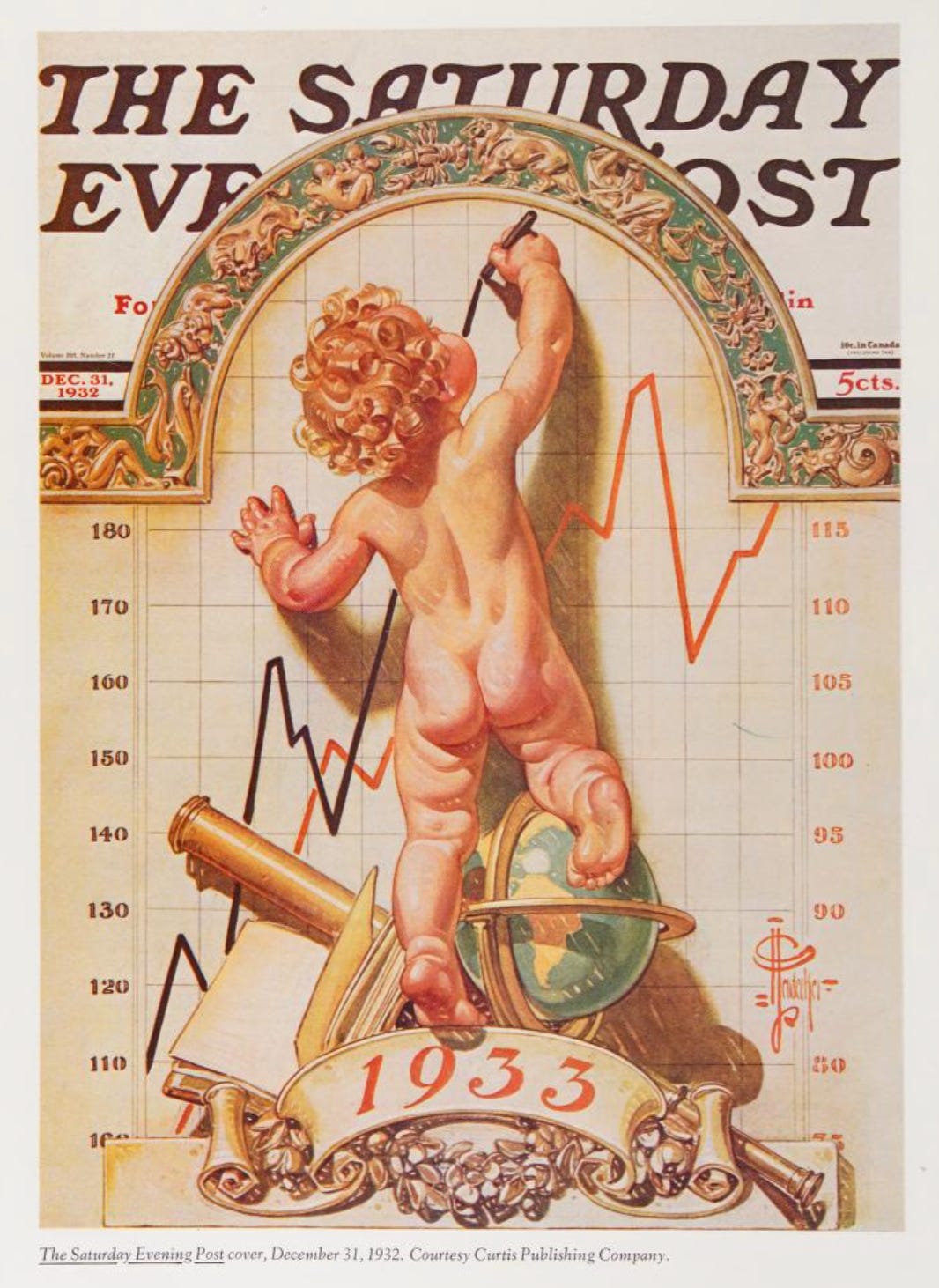
Trading Places is about this New Year journey. A con man, prostitute, butler, and stock trader can become heroes sipping champagne on a secluded beach. It wasn’t an easy path to get there, it took a lot of work and sacrifice, representing the classic New Year’s resolution that many of us try (and often fail).
In the end, the film gives us a toast to new beginnings, centered around a bet coming to fruition akin to a yearly goal achieved. This New Year brings a promise of a new life.
And at the start of this new beginning, there may be apprehension about what the year will bring. Just remember the ending and the promise of a new life for the next year:
Looking good, Billy Ray!
Feeling good, Louis!





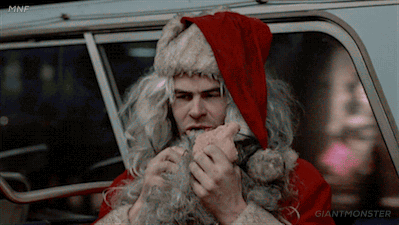
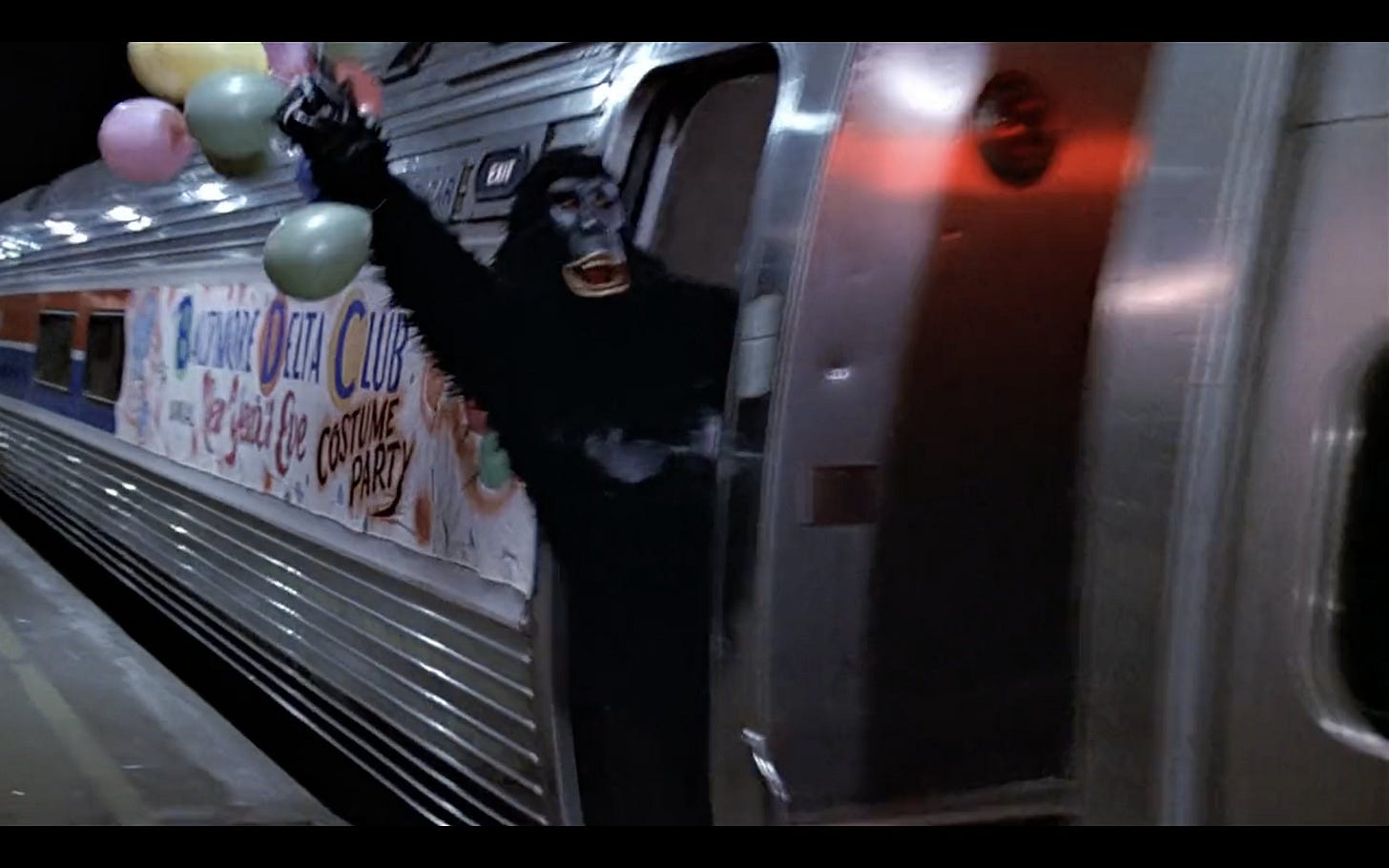
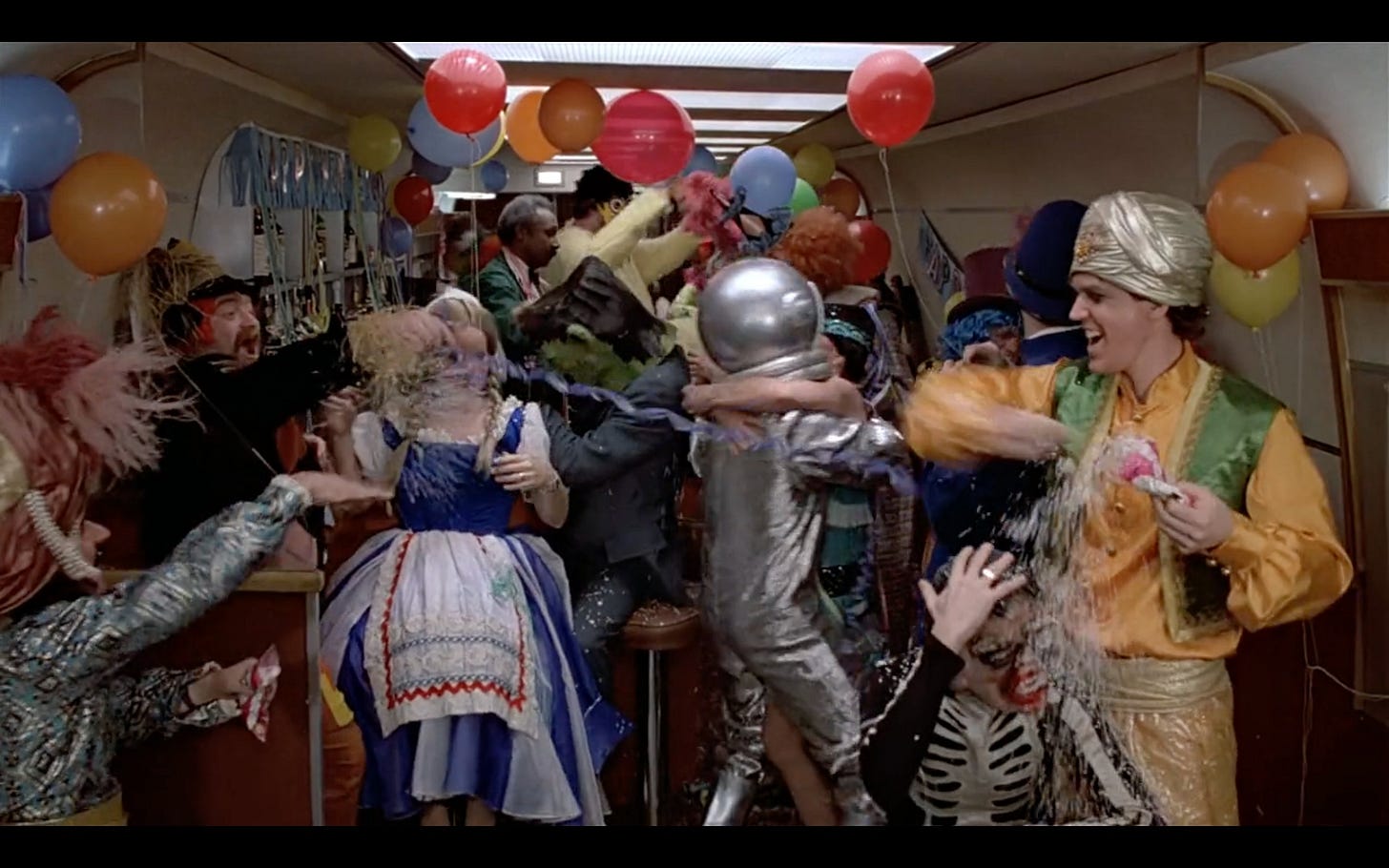
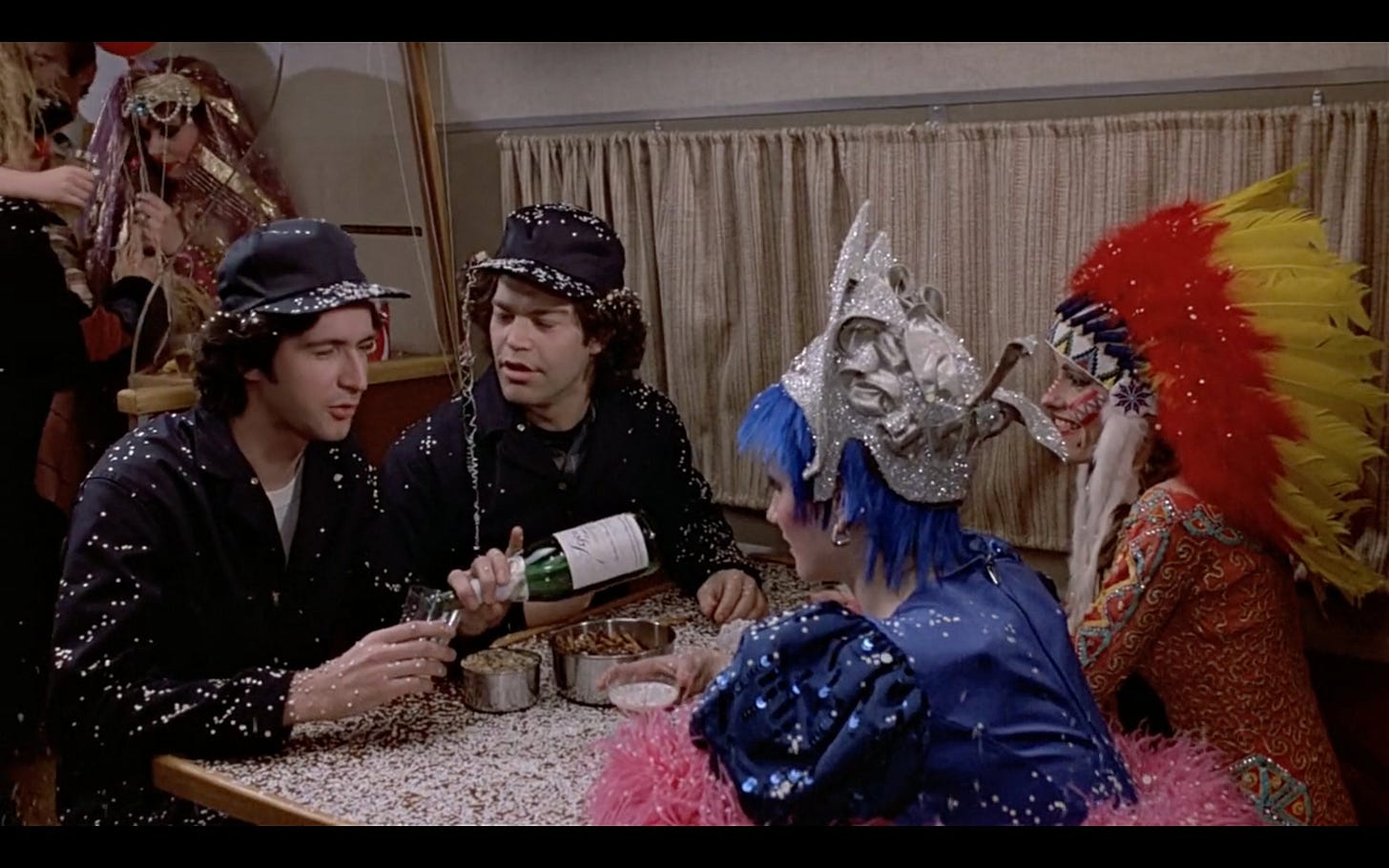
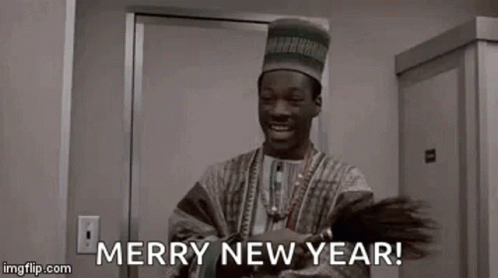
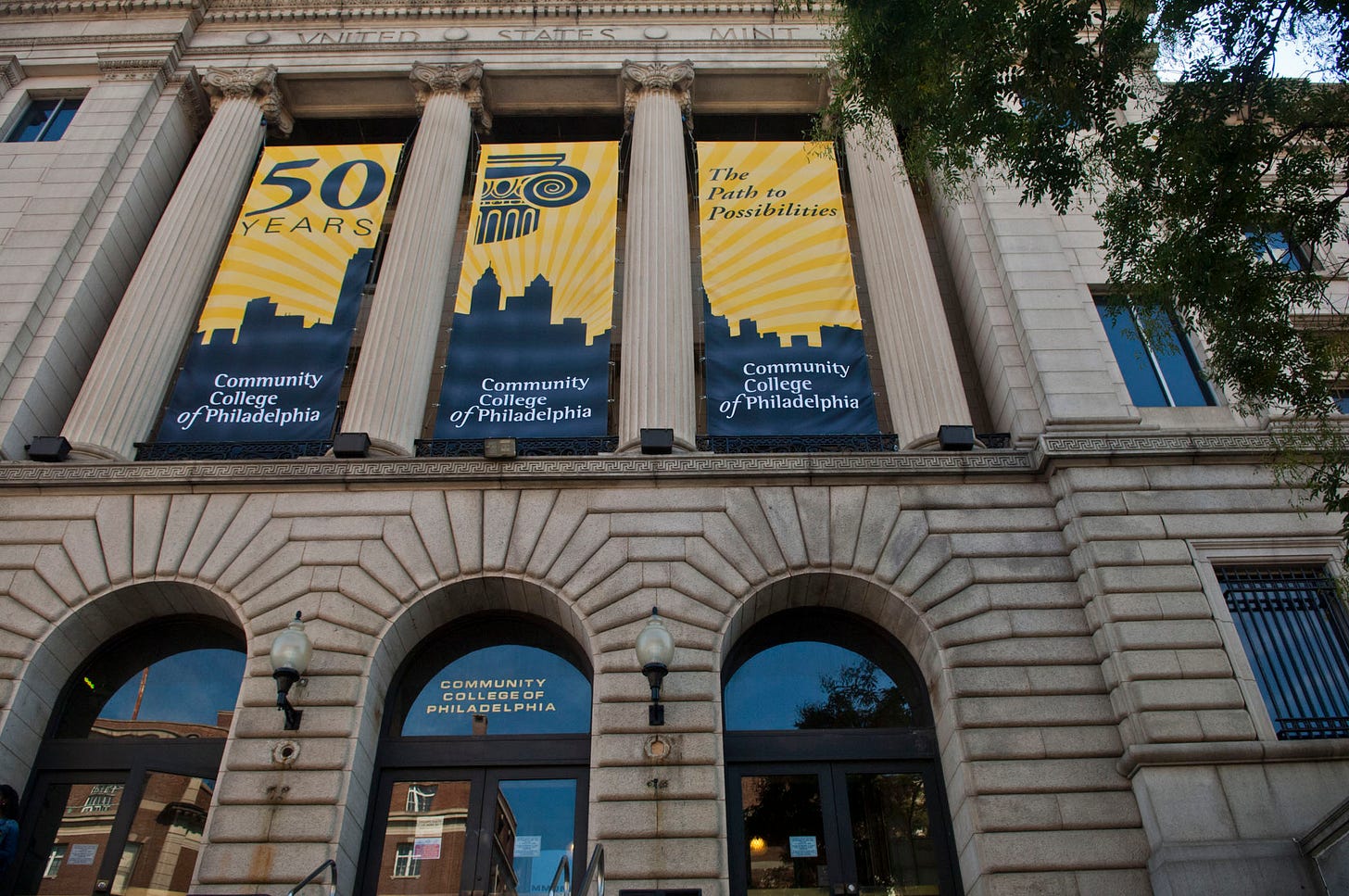
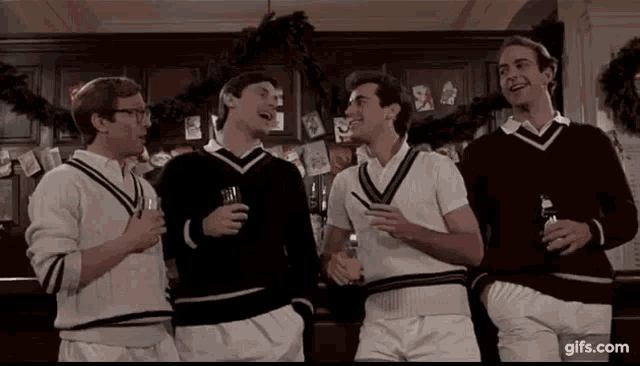
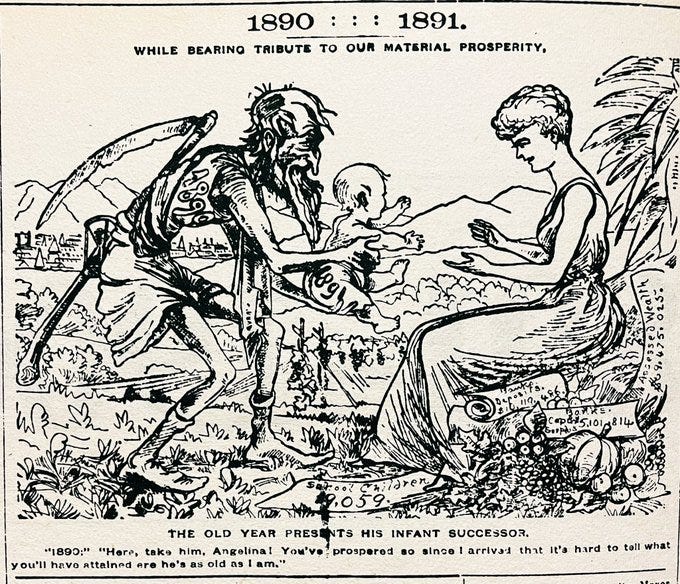
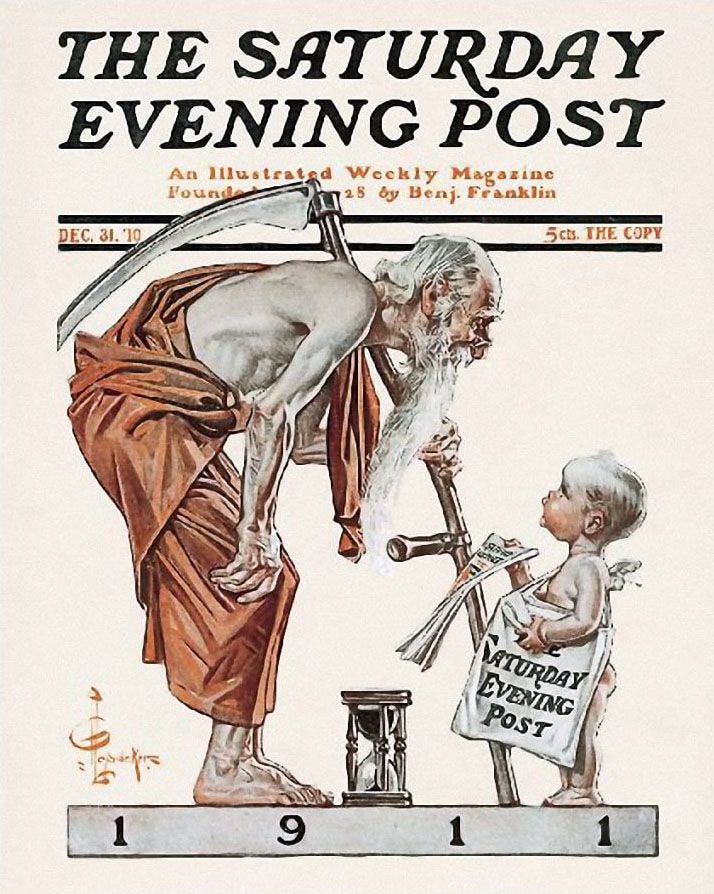
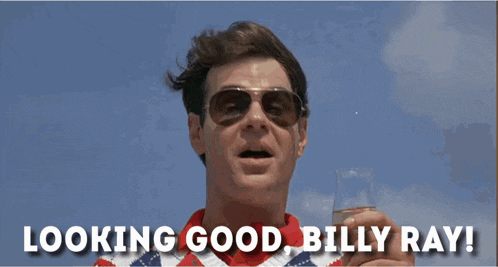
I love this film, it's my favorite of all-time. It has everything. So many memorable scenes, it never ends.